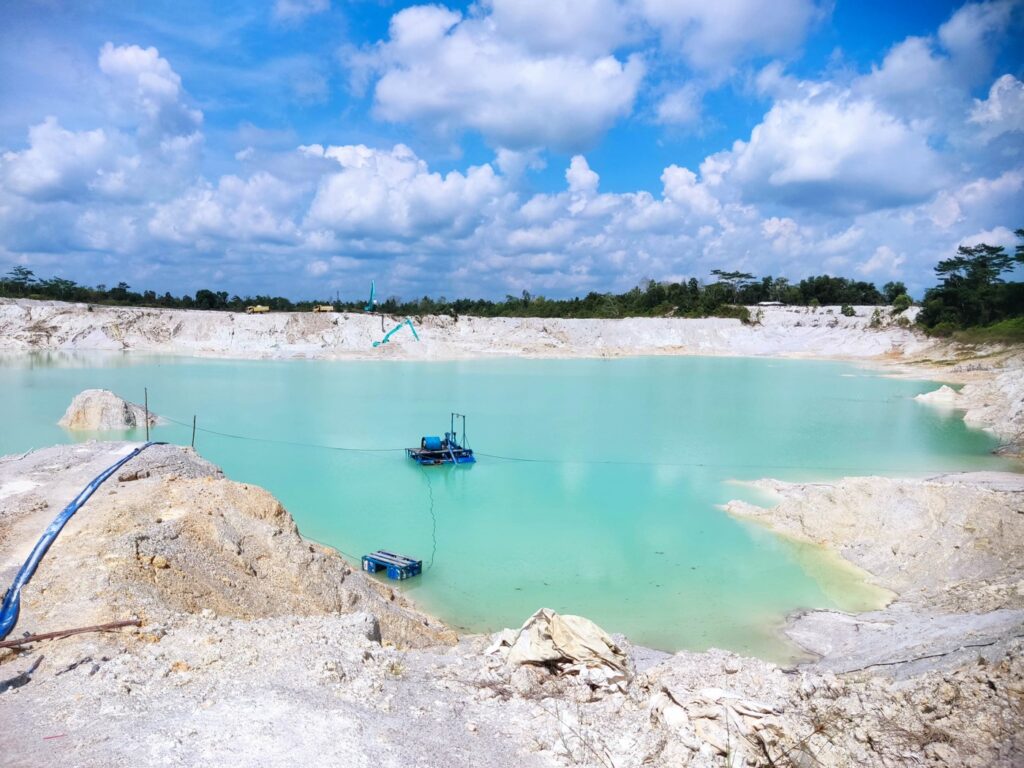
Mining minerals are generally divided into two, namely metallic minerals and non-metallic minerals. Examples of metallic minerals are iron, copper, tin, molybdenum, aluminum. While examples of non-metallic minerals such as phosphate, marble, bentonite, quartz sand to precious stone minerals, namely diamonds. Non-metallic minerals are widely used for various industrial purposes, one of which is the mineral kaolin. What is the mineral Kaolin?
Definition of Caolin
Kaolin is a rock mass which is then composed of clay material which has a low iron content, and is generally white or slightly whitish in color. Kaolin is a fine white clay mineral excavated from the ground. The mineral content in kaolin is mainly in the form of the mineral kaolinite which is composed of hydrated aluminasilicate. Besides kaolinite, there are also other minerals, namely dickite, nakrite and haloisite. You can get kaolin from kaolin clay supplier Indonesia.
Kaolin Formation Process
Kaolin formation (Kaolinization) can be formed by two geological processes, namely weathering processes and hydrothermal alteration processes.
1. Weathering Process
This process occurs in igneous rocks that contain a lot of feldspar with water triggering media, thus changing the feldspar into kaolin. This weathering process occurs at the surface or very close to the surface.
2. Hydrothermal Alteration Process
This process is a mineralogical, chemical and textural change process resulting from the interaction of a hydrothermal solution that rises to the surface through cracks or cracks in the original rock which then changes the feldspar mineral into kaolin. Alteration can produce ore minerals and accompanying minerals.
Types of Kaolin Deposits
Based on the place of formation there are two types of kaolin deposits, namely:
1. Residual Deposits
These deposits form where they originate, mainly from mineral-rich rocks such as granite, granodiorite and dacite.
2. Sedimentary deposits
This deposit is formed from the process of re-deposition of kaolin, both originating from pre-existing kaolin deposits as well as the transport and deposition of kaolinite minerals originating from the mineral carrier layer. Usually this sedimentary clay is deposited far from its place of origin and occupies relatively lower areas, such as swamps and rivers.
Kaolin Mine in Indonesia
Now, you can order kaolin at PT Yudian Kawan Mineral. The mineral kaolin is quite abundant in Indonesia. Mining of this mineral is undertaken in Bangka Belitung, West Kalimantan and South Kalimantan.
Several other areas that have kaolin potential include Bandar Pulau (North Sumatra), Bonjol Pasaman (West Sumatra), Belilas and Indragiri Hulu (Riau), Pondok Kelapa (Bengkulu), Garut and Tasikmalaya (West Java), Blitar and Trenggalek (East Java), Martapura (South Kalimantan), Polewali (South Sulawesi) and Paniai (Papua).
Benefits of Kaolin in Everyday Life
Kaolin is a mineral that is widely used for various industrial activities, including:
1. In the paint industry
Kaolin is used as a good pigment because it can maintain color brightness, makes it easier to make color combinations, increases paint density, forms texture, supports the covering power of paint on the surface to be coated, and increases color brightness.
2. In the ceramics industry
Kaolin provides plastic properties so that ceramic raw materials can and are easily shaped before being fired. When used together with ball clay, it will increase the plasticity of the mass (mixture) which will make it easier to shape and strengthen the dry strength of ceramic products.
3. In the paper industry
Kaolin serves as a pulp filling material where the presence of kaolin on the paper will add weight, be whiter, not transparent, and not easily torn. In newsprint, kaolin is present as much as 2{7d9659bf1845e3aed972ea43869b24214f3df9e68500a61a17b336b32a0d749e} whereas in better paper it can contain up to 30{7d9659bf1845e3aed972ea43869b24214f3df9e68500a61a17b336b32a0d749e} kaolin.
4. In the beauty industry.
The kaolin used is usually in the form of clay or commonly called clay. Kaolin clay is used as raw material for making masks. Kaolin is a thickening agent in masks which functions to absorb dirt in pores, refine facial skin, prevent acne, improve blood circulation and act as a natural shampoo.
